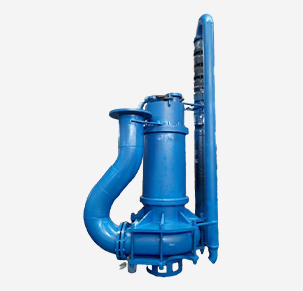English
- Afrikaans
- Albanian
- Amharic
- Arabic
- Armenian
- Azerbaijani
- Basque
- Belarusian
- Bengali
- Bosnian
- Bulgarian
- Catalan
- Cebuano
- Corsican
- Croatian
- Czech
- Danish
- Dutch
- English
- Esperanto
- Estonian
- Finnish
- French
- Frisian
- Galician
- Georgian
- German
- Greek
- Gujarati
- Haitian Creole
- hausa
- hawaiian
- Hebrew
- Hindi
- Miao
- Hungarian
- Icelandic
- igbo
- Indonesian
- irish
- Italian
- Japanese
- Javanese
- Kannada
- kazakh
- Khmer
- Rwandese
- Korean
- Kurdish
- Kyrgyz
- Lao
- Latin
- Latvian
- Lithuanian
- Luxembourgish
- Macedonian
- Malgashi
- Malay
- Malayalam
- Maltese
- Maori
- Marathi
- Mongolian
- Myanmar
- Nepali
- Norwegian
- Norwegian
- Occitan
- Pashto
- Persian
- Polish
- Portuguese
- Punjabi
- Romanian
- Russian
- Samoan
- Scottish Gaelic
- Serbian
- Sesotho
- Shona
- Sindhi
- Sinhala
- Slovak
- Slovenian
- Somali
- Spanish
- Sundanese
- Swahili
- Swedish
- Tagalog
- Tajik
- Tamil
- Tatar
- Telugu
- Thai
- Turkish
- Turkmen
- Ukrainian
- Urdu
- Uighur
- Uzbek
- Vietnamese
- Welsh
- Bantu
- Yiddish
- Yoruba
- Zulu
Telephone: +86 13120555503
Email: frank@cypump.com
Nov . 10, 2024 11:37 Back to list
Guide to Selecting the Right Sewage Injector Pump for Your Needs
Understanding Sewage Injector Pumps A Comprehensive Overview
Sewage injector pumps are essential components in managing wastewater and sewage in residential, commercial, and industrial settings. These pumps are designed to transport sewage and wastewater from lower elevations to higher elevations where gravity alone cannot facilitate flow. This makes them crucial in ensuring efficient waste management and sanitation.
What is a Sewage Injector Pump?
A sewage injector pump is a type of pump that is specifically designed to handle raw sewage and wastewater. Unlike ordinary pumps, which may struggle with solid waste and debris, sewage injector pumps are equipped to manage both liquids and solids without clogging. They are typically installed in areas where sewage cannot naturally flow to the sewer system, such as basements, low-lying spots, or remote locations far from the main sewage lines.
How Does It Work?
The operation of a sewage injector pump involves a few key components. The pump itself includes an impeller, which is a rotating device that moves the sewage through the pump. When the waste enters the pump, it is chopped and ground up into smaller particles by an integrated grinder or macerator. This process allows the liquid and solid waste to be mixed effectively, preventing clogs and enabling smooth transport through the piping system.
Once the waste is adequately processed, the pressure created by the impeller forces the sewage through a discharge pipe that connects to a higher elevation sewer line or a septic tank. The pump is typically activated by a float switch, which senses the level of sewage in the basin. When the sewage reaches a certain height, the switch activates the pump, allowing it to discharge the waste until the basin is emptied.
Applications of Sewage Injector Pumps
sewage injector pump

Sewage injector pumps are used in various applications. In residential properties, they are often installed in basements or areas below the main sewer line to ensure proper waste disposal. This is particularly important in homes with lower-level bathrooms, laundry rooms, or utility sinks. In commercial settings, these pumps are utilized in restaurants, hotels, and other establishments that generate significant amounts of wastewater.
Moreover, sewage injector pumps are critical in construction sites and industrial facilities where wastewater may accumulate in areas without direct access to the municipal sewage system. They facilitate the efficient removal of sewage, ensuring that operations can proceed without interruption from wastewater buildup.
Maintenance Considerations
Like any mechanical system, sewage injector pumps require regular maintenance to operate effectively. Homeowners and facility managers should routinely check the pump's components, including the float switch, impeller, and discharge lines, to ensure they are functioning correctly. Preventative measures, such as clearing debris and inspecting for signs of wear or damage, can help minimize the risk of pump failure.
Additionally, it’s essential to be mindful of what materials are disposed of through the sewage system. Avoid flushing items like wipes, feminine hygiene products, or excessive amounts of food waste, as these can lead to clogs and potentially damage the pump.
Conclusion
Sewage injector pumps play a vital role in modern sanitation, ensuring that sewage and wastewater are effectively managed, especially in areas lacking gravity-fed drainage. Understanding their operation and maintenance can help property owners and managers maintain a proper waste disposal system, contributing to a cleaner and healthier environment. Whether in a residential setting or an industrial facility, these pumps are indispensable in preventing sewage backup and ensuring seamless wastewater management.
-
ISG Series Vertical Pipeline Pump - Chi Yuan Pumps Co., LTD.|Advanced Hydraulic Design&Energy-Efficient Solutions
NewsJul.30,2025
-
ISG Series Vertical Pipeline Pump - Chi Yuan Pumps Co., LTD.
NewsJul.30,2025
-
ISG Series Vertical Pipeline Pump - Chi Yuan Pumps Co., LTD.|energy-efficient fluid handling&industrial durability
NewsJul.30,2025
-
ISG Series Vertical Pipeline Pump - Chi Yuan Pumps | Advanced Engineering&Industrial Efficiency
NewsJul.30,2025
-
ISG Series Pipeline Pump - Chi Yuan Pumps | High Efficiency, Energy Saving
NewsJul.30,2025
-
ISG Series Vertical Pipeline Pump-Chi Yuan Pumps|High Efficiency&Reliable Performance
NewsJul.29,2025










